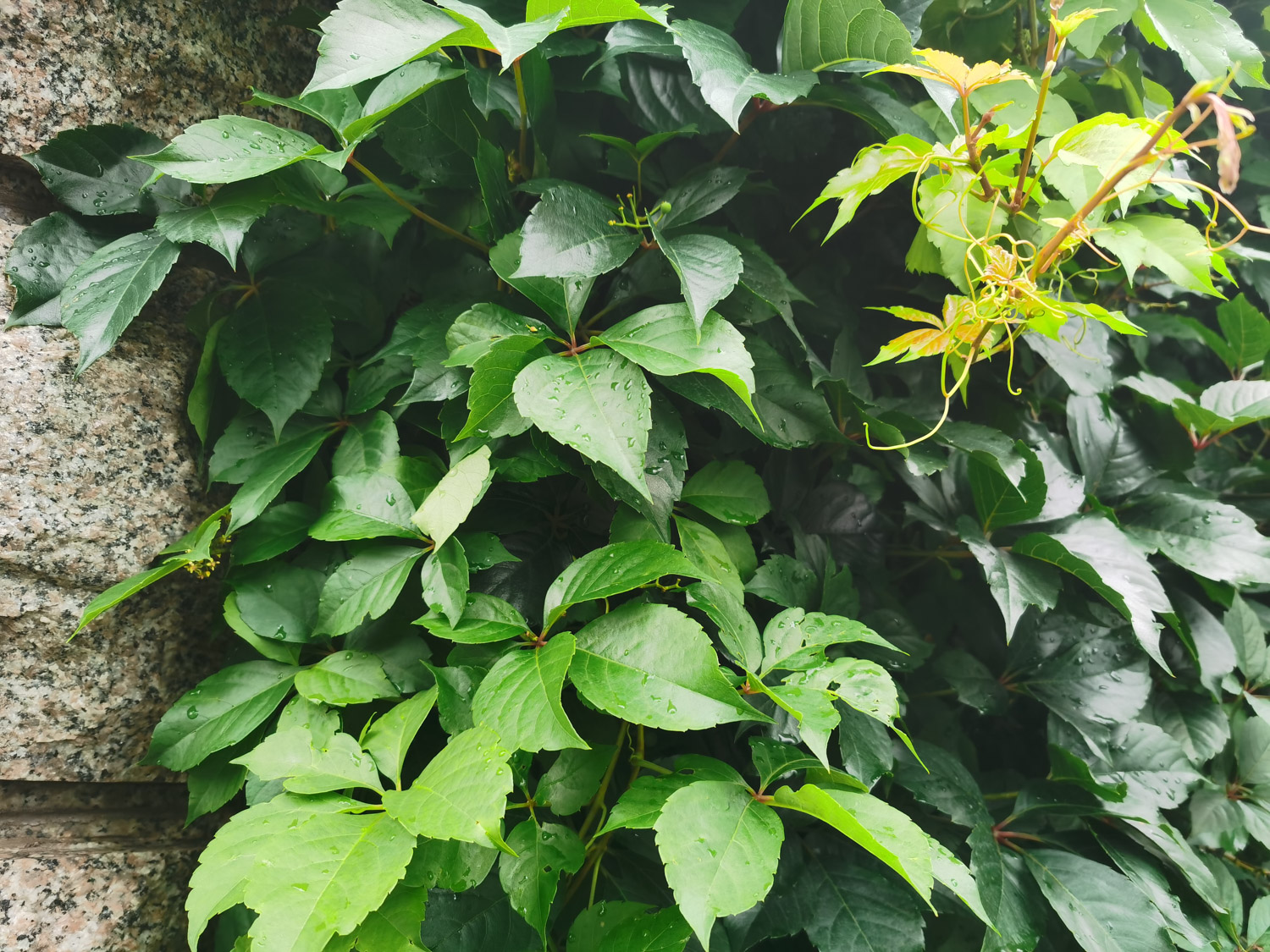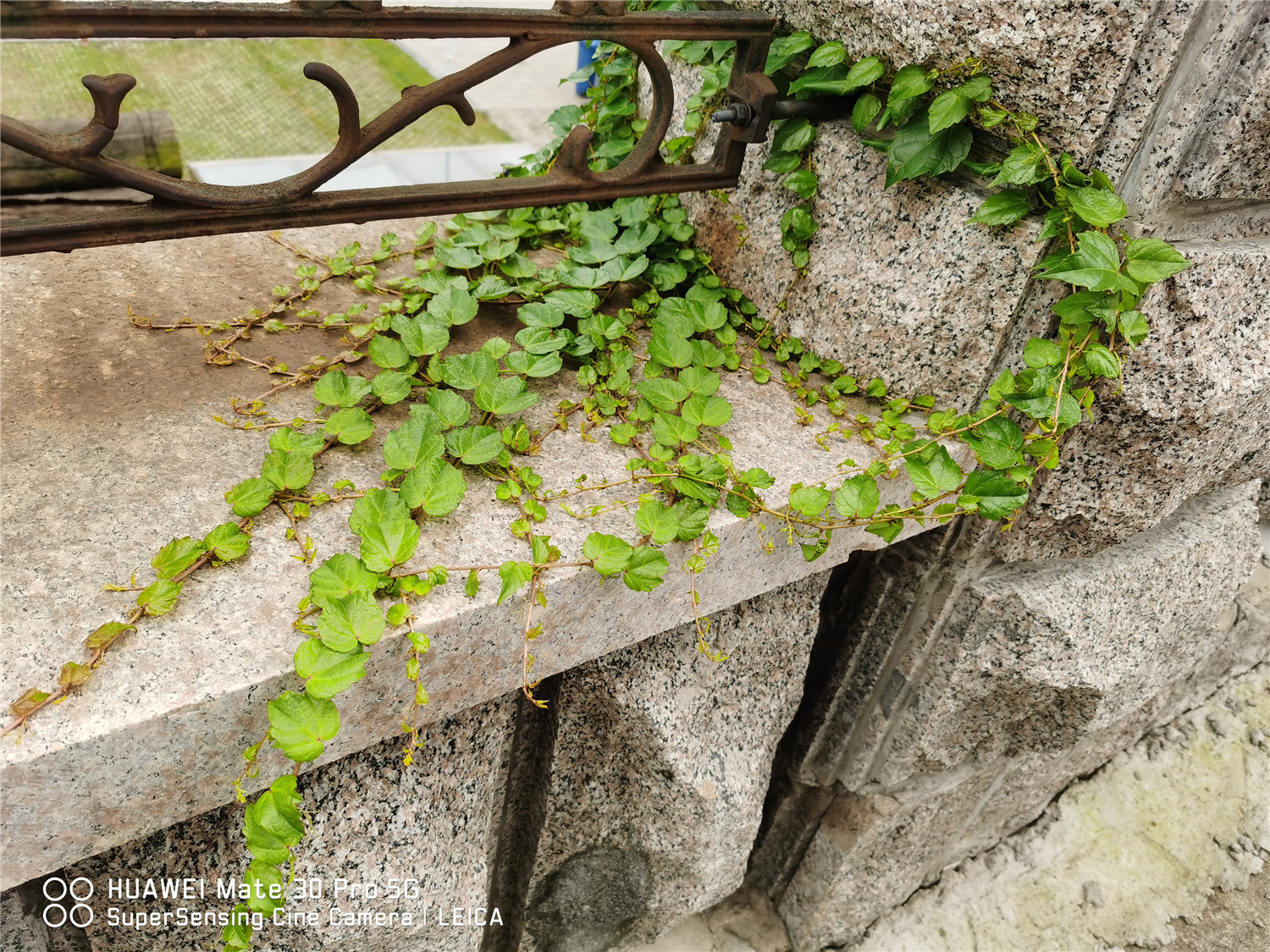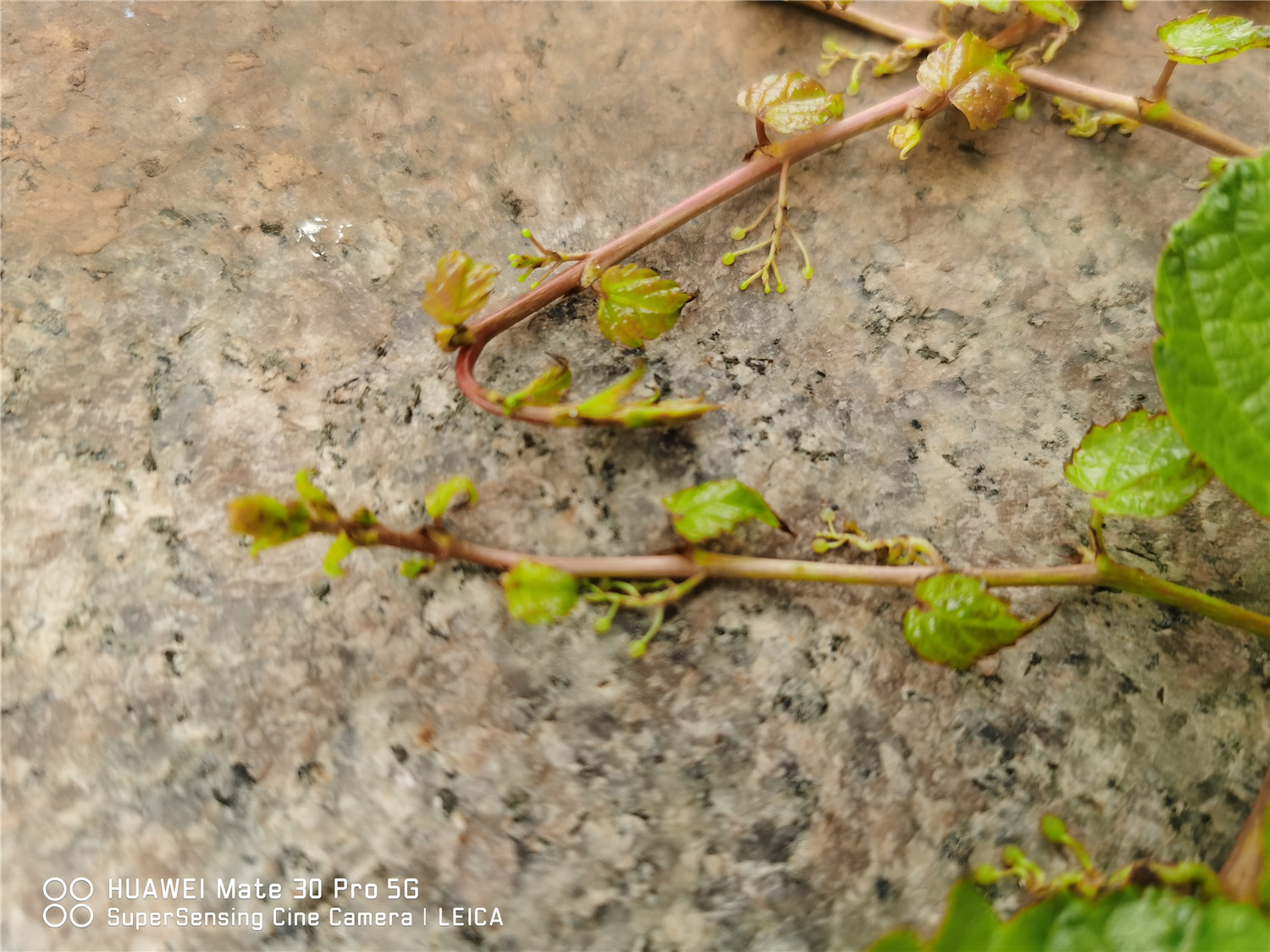1. Why do the leaves of Parthenocissus stick down
The direction in which the Parthenocissus climbs the wall is related to the fact that the leaves of Parthenocissus climb down smoothly. Because it climbs up one foot at a time, and when it grows one foot, it firmly clings to the wall, waiting for new leaves to grow. Then grow another foot and continue to climb up. Its feet are on the opposite side of the petiole. Once it climbs up, it will pull the whole stem upward and the leaves will naturally face downward

Every time the Parthenocissus creeps to the wall, it will drive the stems and leaves to climb on the vertical outer wall. In the long run, the leaf tip will face down because of the earth's gravity
It can be found that the leaves of Parthenocissus creeper are not only smoothly downward, but also evenly distributed, and each leaf hardly overlaps with each other. This is actually a phenomenon called leaf mosaic. They will fill the gaps as much as possible to get more sunlight, and the leaves are unevenly distributed to ensure that all leaves can receive more uniform light as far as possible. The mosaic function of leaves can make it get more sunlight, protect the roots, reduce the loss of water, maintain the humidity of the attached wall, and form a good living environment suitable for its growth

2. How do Parthenocissus climb
Parthenocissus climbs up one foot, not one foot. It has tendrils on its branches, and the top of the tendrils has sticky suction cups. This is its feet. When it meets an object, it will stick to it. Every time it grows a foot, it will climb up, and then cling to the wall tightly. Wait for new branches and new feet to grow, and then the new feet will continue to climb up in a relay. And it also branches, so there may be many feet climbing up at the same time


 jackfruit
jackfruit snake plant
snake plant hibiscus
hibiscus hydrangea
hydrangea lavender
lavender Green roses climb al...
Green roses climb al... If you don't pay att...
If you don't pay att... Management of four g...
Management of four g...
































